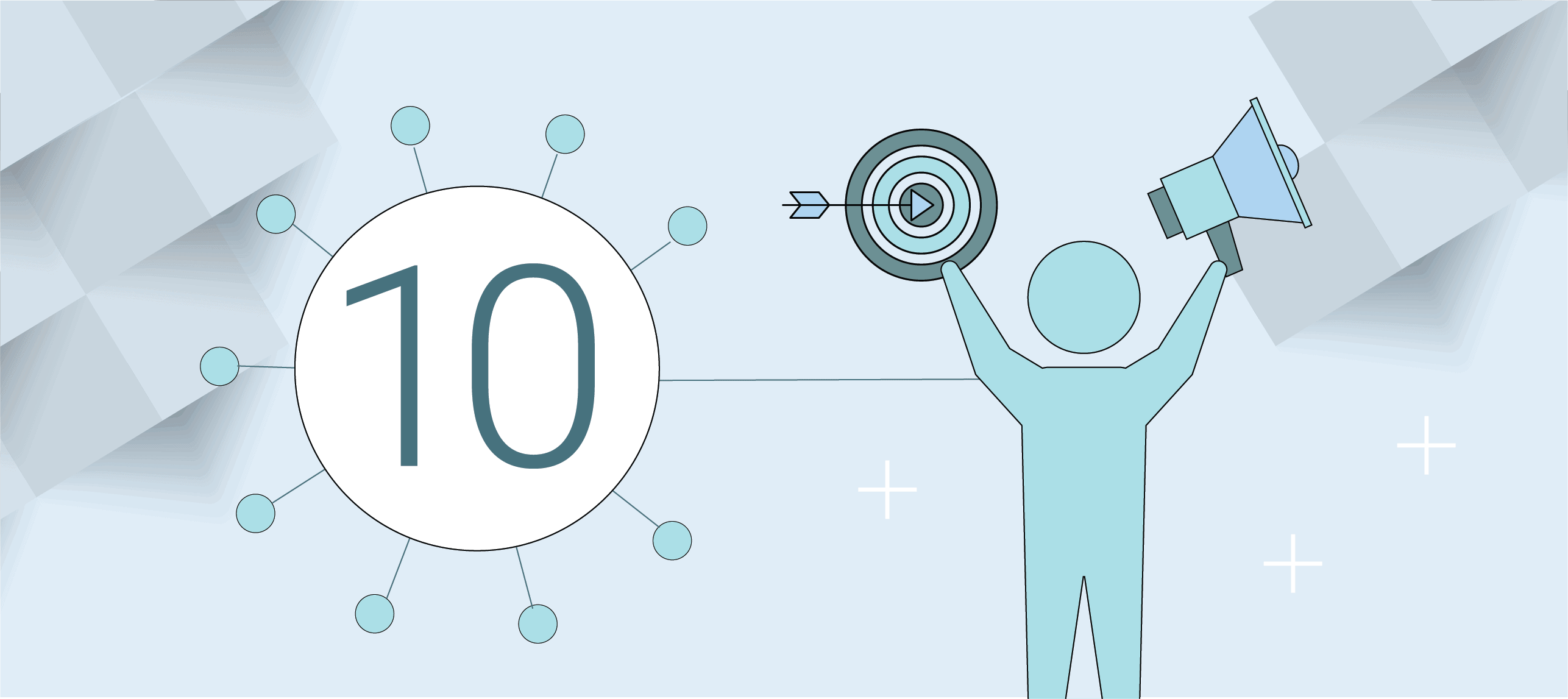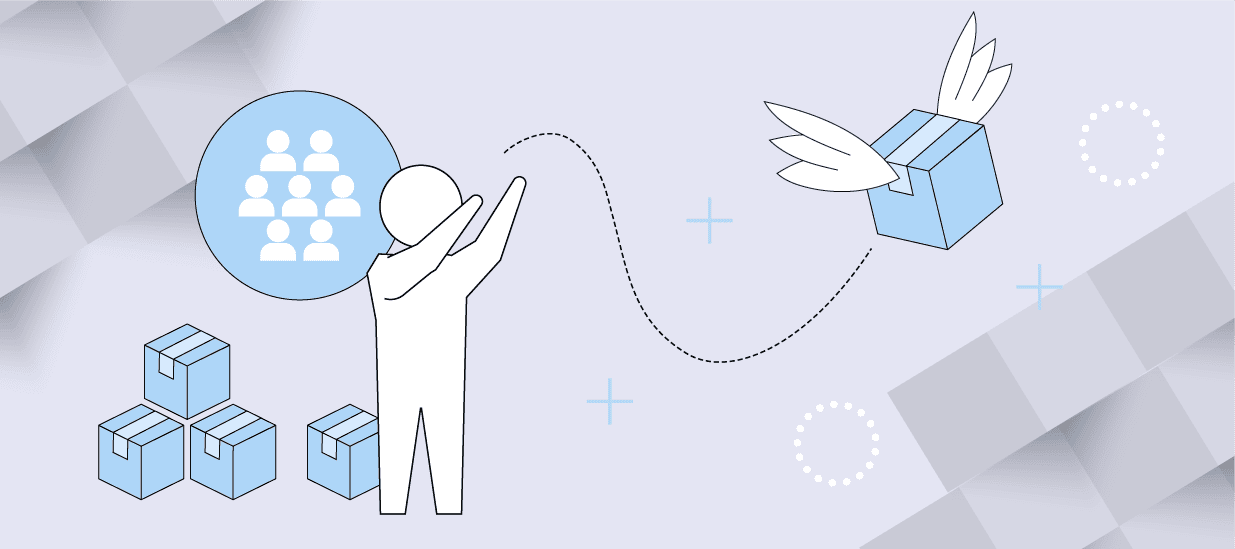When you are on a career path, there are plenty of others who are on a similar journey. Some people are further along and have been where you are right now. Others are behind you, and they can’t wait to reach the milestones you’ve already completed.
Mentorship happens when two people realize the path isn’t a race and instead of keeping our “secrets of success,” we share them.
We reach in front of us as mentees to learn how others navigated similar journeys and we reach behind us to teach those who are just now encountering the challenges we’ve already conquered.
When these types of relationships are built well and intentionally, we can have a thriving network of successful professionals who are better because of the time they spent together.
In my career, I have been both a mentor and a mentee. In fact, I am both right now. I care deeply about these types of relationships because I know just how important they are to long-term career development.
In my experience, I’ve found that a good mentee is ready to work hard toward goals, follows through on commitments, maintains a positive outlook and practices active listening. A good mentor is empathetic, patient, responsive and insightful.
I have also learned a lot about mentoring by building programs for companies, so I am going to share what a successful mentorship structure looks like so you can incorporate these types of relationships into your workplace and life.
Seven Ingredients for a Successful Mentorship Relationship
After having many mentorship structures, I’ve discovered seven key ingredients that consistently lead to a successful mentorship relationship. If one is missing, the meetings aren’t nearly as productive or helpful, and that’s true if I am the mentee or the mentor.
- Self-Reflection
When beginning a mentorship, it is imperative that the mentee takes the time to determine the areas where support will be required. Self-reflection is the constitution that the mentorship will be built upon. - Defined Goals and Objectives
Do this within a framework that looks at how those specific goals will solve current problems. Also, ensure there is some way to measure progress or success. This gives the relationship some substance. - Agreement
The mentor must make time for the mentee. However, it is equally important that the mentee takes control of the relationship. This means that he/she is responsible for the productiveness of the time spent together, decides on the topics brought to the table, asks the questions and discerns the takeaways from each given meeting. - Situation
Consider seeking mentorship outside of the organization where you work in order to learn different perspectives and views. Sometimes when you pick someone that’s within the same organization, you’ll think similarly, approach problems in the same way and share similar life experiences. An ideal mentorship opens the mentee up to new ways of looking at problems. Diverse experiences are the necessary environment for innovative solutions. - Trust
If you don’t trust someone, it won’t be reciprocated and in turn, respect can’t be built. In a mentorship, the mentee may need to share difficult situations they’re experiencing at work with a coworker or a boss, and having confidence in the mentor’s discretion ensures a healthy relationship. It helps if the mentor can weigh in with similar experiences they’ve had in the workplace to offer insight. I had one mentee who said that she felt empowered to creatively solve the roadblocks in her career because she felt seen and heard. She showed up prepared and ready for our biweekly meetings, and she got a lot from the relationship. - Feedback
The mentor must be able to provide quality feedback. The mentee must be open to receive criticism in the form of feedback. The whole idea is to learn and let go of previous thought patterns. - Acclamation
This is the best part of the process. It’s where the successes come together. Look back at the journey as a yardstick for how much the mentee has grown.
How to Build an Effective Meeting Structure
For many, the thought of starting a mentor/mentee relationship feels ambiguous and daunting. The right structure can bring clarity to the relationship and create a productive environment for both people.
Prior to the Meetings
Make sure that they are prepared for meetings and the relationship.
In every mentorship, both people are busy with their lives and careers. It helps to schedule regular dates and times to meet. However, in this relationship, the mentee needs to both take initiative and remain flexible to the mentor’s schedule and priorities.
To prepare for regular sessions after the initial meeting, I ask the mentee to share their top three areas they would like to discuss. It helps me know how to guide the conversation and what examples should be shared. I ask them to just send over a quick note, even if it’s the day before our scheduled time together.
Initial Meeting
During the first meeting, you lay the ground rules to ensure a productive relationship. I like to share a partnership checklist that we use at my consulting company. But most importantly, we outline expectations, set goals, schedule meetings and develop an action plan. Mentees need to know what is expected of them, as well as their own expectations in terms of what they want to learn and gain from the relationship.
Regular Meetings
As the relationship moves beyond introductions, the conversations should be collaborative. The mentor should work to help the mentee stay goal-focused by monitoring his/her progress and outcomes.
I like to ask them questions about their projects like, “Hey, how did that presentation go? I know you were worried about it. Were you okay in front of the directors?” It’s in those conversations that you can identify where they are having success and those they may want to improve.
I had one of my mentees say to me once “I choked in front of all the directors because they asked me some questions. I didn’t have an answer.”
I said, “Okay, but what did we talk about?”
He said, “You taught me to say let me get back to you.”
I asked him if he did that and he said yes, so I told him he didn’t choke, he just didn’t know an answer and it’s okay to respond later. Sometimes mentoring is just teaching people to have the right response in uncomfortable situations.
The mentor can also provide the mentee with a self-assessment and perhaps a mid-term assessment to monitor progress and make pivots when necessary. I typically ask for reflections on a regular basis based on the progress of the mentee.
Last Meeting
Some mentorship programs are long-term, meaning they last years or they don’t have a specific end date. However, most mentorship structures involve a start and end date. The last meeting of mentorship is important because it’s when both people can celebrate all the progress. You should also review goals, discuss learnings and establish future goals.
Positive Outcomes From Mentorship Programs
Many people believe that mentorship is a formal exchange of knowledge that benefits the mentee more than the mentor, but both people experience growth during the shared experience.
In the mentorship program, mentees benefit from positive word-of-mouth affirmations, constructive criticism and, ideally, professional growth including promotions.
Mentors get the satisfaction of helping others achieve their goals, and they gain experience with coaching and leadership which could propel their career as well.
Both people in the relationship see growth in their professional network, which could lead to an increase in job opportunities in the future.
Author
-

Lisa Bruce has had several formal and informal mentees over the years, which has helped her to develop a strong set of best practices. Through this, Lisa built a personal mentorship discipline that has helped others initiate an internal mentor program within their own firms. She has over 20 years of corporate experience, is a PAC Founder and speaker and has just recently completed her Pragmatic Institute Certification.
View all posts








